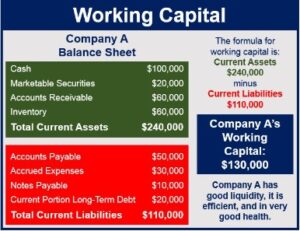
By catching these differences through reconciliation in accounting, you can resolve discrepancies, help prevent fraud, better ensure the accuracy of financial records, and avoid regulatory compliance issues. It not only allows you to protect your clients’ funds, but your firm too as a result. Once these previous steps are completed, you then check that your bank account statement balance is equal to the balance in your internal records. The analytics review approach can also reveal fraudulent activity or balance sheet errors. In this case, businesses estimate the amount that should be in the accounts based on previous account activity levels.
Best Practices for Maintaining Accounting Accuracy
For example, you may need to reconcile your trust account bank statement with client balances at a specific frequency, such as monthly or quarterly. 8 fair value of financial instruments However, generally accepted accounting principles (GAAP) require double-entry bookkeeping—where a transaction is entered into the general ledger in two places. When a business makes a sale, it debits either cash or accounts receivable on the balance sheet and credits sales revenue on the income statement.
Automated Reconciliation Is Best for Your Business
GAAP requires that if the direct method is used, the company must reconcile cash flows to the income statement and balance sheet. The account conversion what is fica is it the same as social security method is where business records such as receipts or canceled checks are simply compared with the entries in the general ledger. Reconciliation is an accounting procedure that compares two sets of records to check that the figures are correct and in agreement and confirms that accounts in a general ledger are consistent and complete.
Repeat the process regularly
One other use of account reconciliation is a company’s need to maintain an internal control environment that complies with Section 404 of the Sarbanes-Oxley Act. Once the trial balance looks accurate, you can rest assured your accounts have been reconciled properly. This calculation of interest on capital one doesn’t have to be a comparative trial balance, because you’re only interested in checking the new balances after all your journal entries have been completed. Adding the two columns, the bank reconciliation form now displays your reconciled balance of $12,360. The process of account reconciliation is all about creating a more robust and reliable financial foundation for your business.

The company’s bank is contacted to get information on these additional or missing transactions and a discovery is made that it was indeed a bank error. It is reimbursed for the incorrect deductions and rectification of these transactions brings consistency and accuracy to the receipts account, bank statement balance, and cash book balance. A good example of where this method is in play is where a company maintains a record of all its receipts for purchases made and, at the end of an accounting period, embarks on account reconciliation. When conducting a reconciliation, comparing the receipt records with records in a cash book, the company notices that it was charged for ten additional transactions not recorded in the cash book.
The general ledger balance of an account is compared to independent systems, third-party data, or other supporting documentation to ensure the balance stated in the general ledger is extremely accurate. This process confirms that records of transactions are complete and consistent, helping companies make important business and financial decisions using very accurate records. Some businesses with a high volume or those that work in industries where the risk of fraud is high may reconcile their bank statements more often (sometimes even daily).
What are the Types of Reconciliation in Accounting?
- Some reconciliations are necessary to ensure that cash inflows and outflows concur between the income statement, balance sheet, and cash flow statement.
- As noted earlier, your state may have specific requirements for how often you must conduct three-way reconciliation—such as monthly or quarterly.
- As mentioned above, account reconciliation involves comparing internal account information against external documents.
- And, for some types of accounts, like trust accounts, there may be specific frequency requirements that you must follow to stay compliant with your state bar.
- The documentation review method looks to be a tiring process but automation software that pulls records and documents from various sources through integrations and APIs exists.
- It involves reviewing the general ledger to confirm that all entries and balances are correct.
Its powerful matching algorithms quickly identify and resolve variances, increasing speed and accuracy. You may need to create a separate record on the discrepancies identified, especially where these discrepancies are large in number. This helps for more careful account reconciliation processes in the future and documentary evidence to external stakeholders. The perpetuation of fraud is one of the very common problems facing a lot of financial institutions. Even though accounting processes help to monitor every transaction, fraudsters work with accountants to make changes to accounting records.
The charges have already been recorded by the bank, but the company does not know about them until the bank statement has been received. It is possible to have certain transactions that have been recorded as paid in the internal cash register but that do not appear as paid in the bank statement. An example of such a transaction is a check that has been issued but has yet to be cleared by the bank. Finally, without adequate account reconciliation processes in place, both internal and external financial statements will likely be inaccurate. And generating financial reports in Clio Accounting is a breeze, making your life, and your accountant’s life that much easier. The analytics review method reconciles the accounts using estimates of historical account activity level.
Leave a Reply